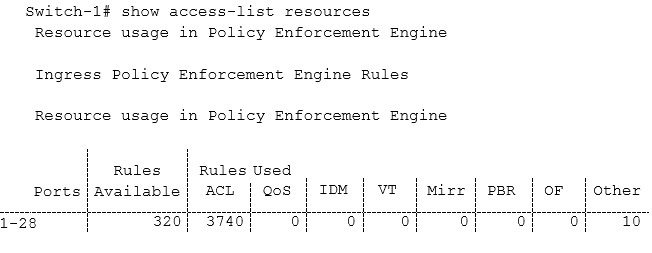Refer to the exhibit.

An AOS-Switch has an extended ACL that is applied to several physical interfaces.
- New interfaces have been brought online.
- The ACL has been applied to them as well.
A network administrator sees the output in the exhibit and is concerned that the switch will reach the limit for rules.
What can the administrator do to address this concern?